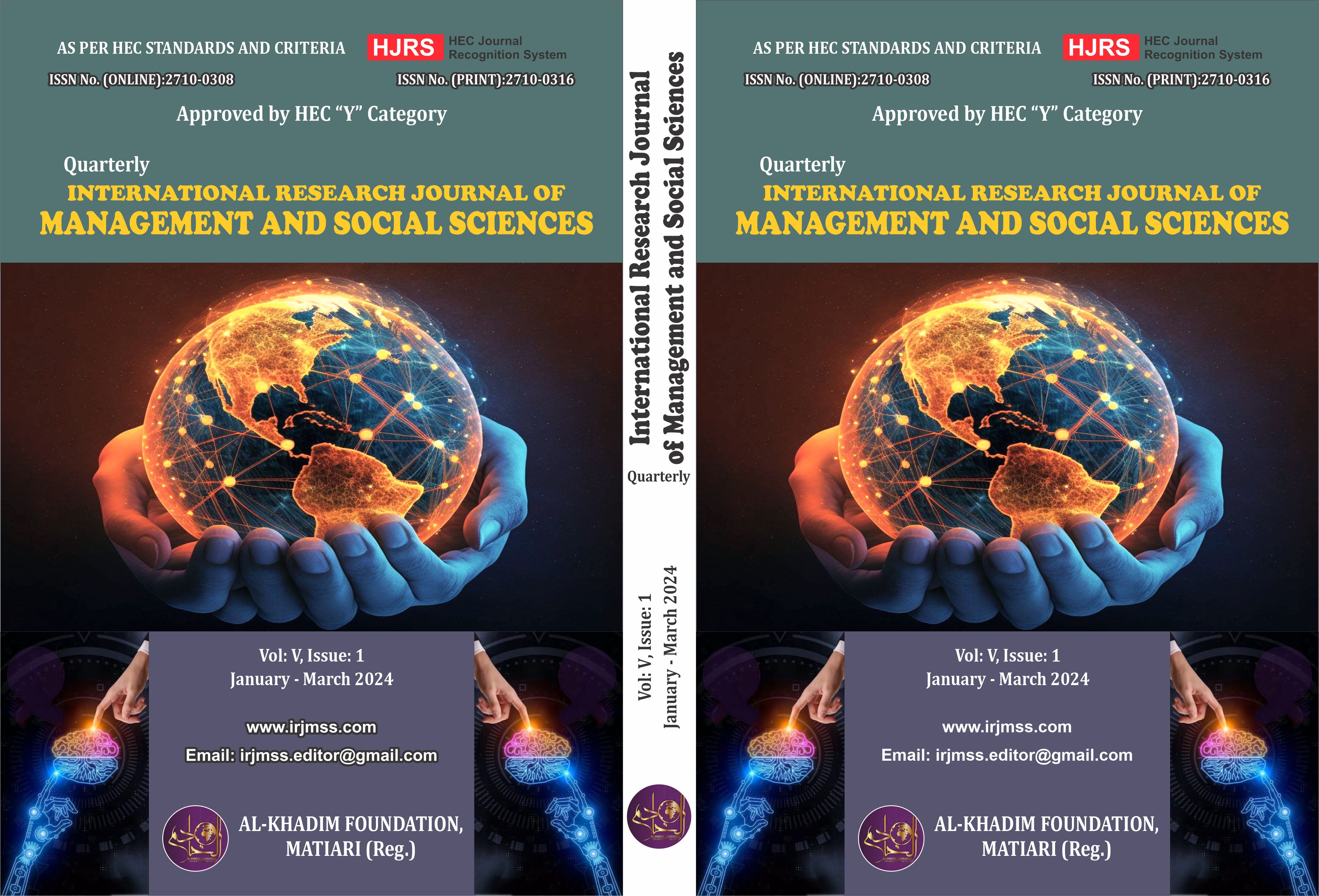Exploring the Role of Mobile Phone Applications in Improving Foreign Language Learners’ Vocabulary Stuff
Keywords:
Foreign Language Learners, Foreign Language, Mobile Phone Applications, Vocabulary ItemsAbstract
The objective of the study was to explore the role of mobile phone applications in improving foreign language learners' vocabulary items. For the execution of the study, the data for the present study was collected from the public sector colleges of Dera Ghazi Khan. All the students who participated in this study were from the 2nd, 4th, 6th & 8th Semesters and these students were registered in English Department. The majority of research participants agreed and strongly agreed that using mobile applications helps L2 learners become more critical thinkers, increases their self-esteem and sense of individuality, encourages self-directed learning, pushes them to study in both formal and informal contexts, and helps underachievers succeed academically. However, it is desirable to create, organise, and implement these mobile applications with extraordinary care and attention, according to the demands and levels of the learners, to achieve the desired positive effect.
References
Abdulrahman, T. R., & Jullian, M. H. (2020). engaging young learners in learning vocabulary: a study on learners’perception. Akademika, 9(01),139-153.
Basalamah, A. (2021). A Language Tutoring Tool based on AI and Paraphrase Detection. International Journal of Advanced Computer Science and Applications, 12(12).
Calvo-Ferrer, J. R., Melchor-Couto, S., & Jauregi, K. (2016). ReCall special issue: Multimodal environments in CALL. ReCALL, 28(3), 247-252.
Castañeda, D. A., & Cho, M. H. (2016). Use of a game-like application on a mobile device to improve accuracy in conjugating Spanish verbs. Computer Assisted Language Learning, 29(7), 1195-1204.
Chai, C. S., Yu, D., King, R. B., & Zhou, Y. (2024). Development and Validation of the Artificial Intelligence Learning Intention Scale (AILIS) for University Students. SAGE Open, 14(2), 21582440241242188.
Chik, A. (2014). Digital gaming and language learning: Autonomy and community.
Gamlo, N. (2019). The Impact of Mobile Game-Based Language Learning Apps on EFL Learners' Motivation. English Language Teaching, 12(4), 49-56.
Ghaderpanahi, L., (2019), “Using authentic aural materials to develop listening Comprehension in the EFL classroom,” English Language Teaching, 5(6), 146.
Goodarzi, M., Ahmadi, S. M., Asle Zaker Lighvan, M., Rahmati, F., Molavi, M., & Mohammadi, M. (2020). Investigating the psychometric properties of the 8-item somatic symptom scale in non-clinical sample of Iranian people. Practice in Clinical Psychology, 8(1), 57-64.
Grimshaw, J., & Cardoso, W. (2018). Activate space rats! Fluency development in a mobile game-assisted environment.
Huang, C., & Sun, P., 2017, “Using mobile technologies to support mobile multimedia
English listening exercises in daily life,” In The international conference on computer and network technologies in education (CNTE 2010).
Harmer, J., & Khan, S. (1991). The Practice of English Language Teaching with DVD. A TESOL Publication of English Australia Pty Ltd, 24(1), 85.
Hennessy, S., Howe, C., Mercer, N., & Vrikki, M. (2020). Coding classroom dialogue: Methodological considerations for researchers. Learning, Culture and Social Interaction, 25, 100404.
Huckin, T. (1995). Second language reading and vocabulary learning.
Houser, M. J. (2010). The syntax and semantics of do so anaphora (Doctoral dissertation, UC Berkeley).
Izadi, M., & Yarahmadzehi, N. (2020). The metalinguistic awareness of bilingual (Persian-Baluchi) and monolingual (Persian) learners of English language. Linguistic Approaches to Bilingualism, 10(2), 249-289.
Jin, Y. (2023). Test-taker insights for language assessment policies and practices. Language Testing, 40(1), 193-203.
Klimova, B. (2019). Impact of mobile learning on students’ achievement results. Education Sciences, 9(2), 90.
Kukulska-Hulme, A., & Shield, L. (2008). An overview of mobile assisted language learning: From content delivery to supported collaboration and interaction. ReCALL, 20(3), 271-289.
Kukulska-Hulme, A. (2009). Will mobile learning change language learning?. ReCALL, 21(2), 157-165.
Li, J., & Cummins, J. (2019). Effect of using texting on vocabulary instruction for English learners.
Liu, P. L. (2016). Mobile English vocabulary learning based on concept-mapping strategy. Language Learning & Technology, 20(3), 128-141.
Mason, A., & Zhang, W. (2017). An exploration of the use of mobile applications to support the learning of Chinese characters employed by students of Chinese as a foreign language. Beyond the language classroom: researching MOOCs and other innovations, 99-112.
McCarthy, M. (2001). Issues in applied linguistics. Cambridge University Press.
Morganna, R. (2019). Indonesian EFL Teachers' Ideologies of Lingua Culture. ENGLISH FRANCA: Academic Journal of English Language and Education, 3(01), 15-40.
Nami, F. (2020). Educational smartphone apps for language learning in higher education: Students’ choices and perceptions. Australasian Journal of Educational Technology, 82-95.
Niño, A. (2015). Language Learners Perceptions and Experiences on the Use of Mobile Applications for Independent Language Learning in Higher Education. IAFOR Journal of Education.
Pavlík, R. (2018). A Textbook of English Lexicology II. Word Relations, Words in.
Pourhosein Gilakjani, A., & Sabouri, N. B. (2017). Advantages of using computers in teaching English pronunciation. International Journal of Research in English Education, 2(3), 78-85.
Saran, M., & Seferoglu, G. (2010). Supporting foreign language vocabulary learning through multimedia messages via mobile phones. Hacettepe University Journal of Education, 38(3), 252-266.
Schmidt, T. (2016). Good practices in the compilation of FOLK, the Research and Teaching Corpus of Spoken German. International Journal of Corpus Linguistics, 21(3), 396-418.
Shamim, A. (2021). A Description of the Phonology and Morphology of Kɔɖa, an Endangered Language of Bangladesh (Doctoral dissertation, City University of New York).
Siahaan, E. B. (2020). Students' Perception of Edmodo Use as a Learning Tool. Journal of English Teaching, 6(1), 12-23.
Steels, L. (Ed.). (2012). Computational issues in fluid construction grammar (Vol. 7249). Springer.l
Sweeney, S. (2013). Navigating through multiple languages: A study of multilingual students' use of their language repertoire within a French Canadian minority education context. University of Ottawa (Canada).
Walsh, O. (2021). Introduction: in the shadow of the standard. Standard language ideology and attitudes towards ‘non-standard’varieties and usages. Journal of Multilingual and Multicultural Development, 42(9), 773-782.
Wu, Q. (2015). Pulling mobile assisted language learning (MALL) into the mainstream: MALL in broad practice. PloS one, 10(5), e0128762.






